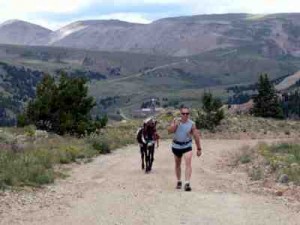Letter from Tom Mackelvie
Railroads – January 2006 – Colorado Central Magazine
Ed:
I read in the December edition about “high altitude” railroads in Colorado (and the world) and thought you might have overlooked the Argentine Central, a line from Georgetown to the top of Mt. McClellan, just east of Grays peak).
I checked my old 1957 USGS map and I estimate the elevation at near 13,000 feet above sea level. That’s another 1,500 feet above the line you mentioned near Leadville. [The D&RGW’s Ibex Mine spur at 11,522 feet.]
The Alpine Inn in Georgetown years ago had a photo of an excursion train there. Also there was no mention of the “Shay” locomotives (used for steep & tight turning) in your article.
Tom MacKelvie
Salida
Tom:
You’re right. I did overlook the Argentine Central, and feel especially embarrassed because Martha and I once walked a ways up its old grade, which topped out just above 13,000 feet. It was the highest adhesion (no cogs or the like) railroad in North America while it lasted.
It was a narrow-gauge line which connected to the narrow-gauge Colorado Central at Georgetown, and used switchbacks and a 7% grade to climb Mt. McClellan and serve a small mining camp named Waldorf. It used Shay locomotives to handle the steep grade and tight curves — regular steam locomotives had one horizontal cylinder on each side of the boiler, but Shays had several vertical cylinders on one side of the boiler, and used gears to transmit power to the wheels.
The Argentine Central was constructed in 1906. Mining business was sporadic. The line was something of a tourist attraction, but at that altitude it had a short season, and its owners refused to run trains on Sundays. It was abandoned in 1918.
I missed it because I didn’t think of it when I wrote that piece, and the main reference I consulted on railroad altitudes was published in 1937, years after the Argentine Central was abandoned and thus no longer listed among the operating lines.
Ed

